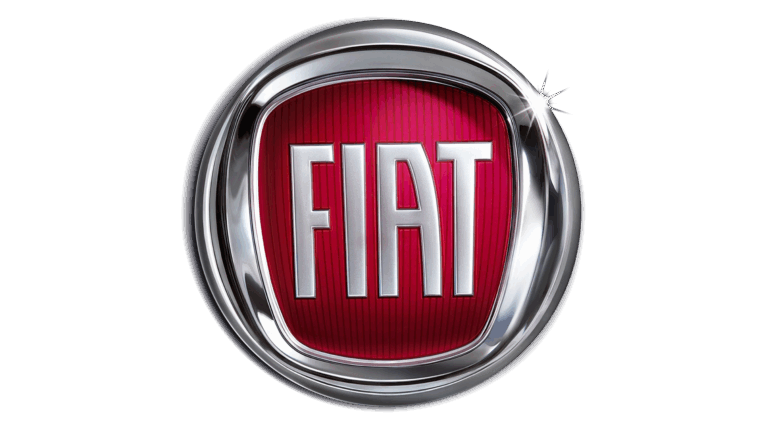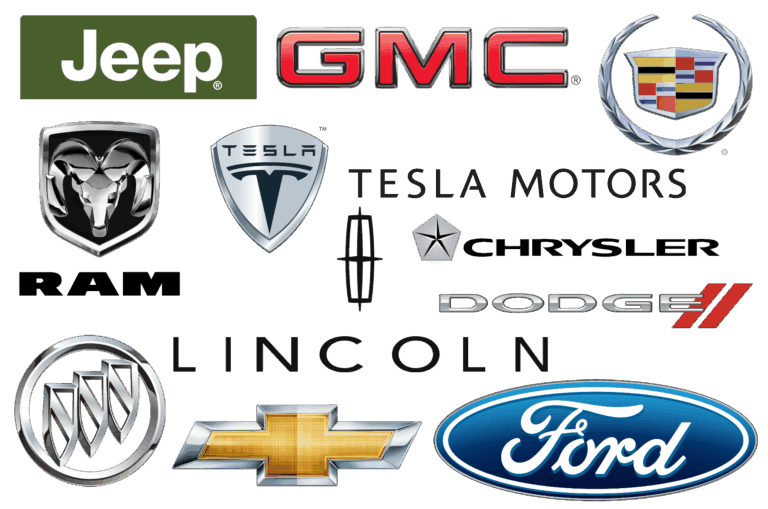Typical Component Breakdown Of A Truck Cab: A Comprehensive Guide to Maintenance and Longevity
Typical Component Breakdown Of A Truck Cab: A Comprehensive Guide to Maintenance and Longevity cars.truckstrend.com
The truck cab, far more than just a shell, is the command center, mobile office, and often, the second home for professional drivers. It houses critical controls, provides essential comfort, and ensures the safety of its occupant. While the robust chassis and powerful engine often grab the spotlight, the cab’s intricate components are equally susceptible to wear and tear, breakdowns, and age-related failures. Understanding the typical component breakdown of a truck cab is not merely about anticipating repairs; it’s about proactively ensuring safety, maximizing uptime, controlling operational costs, and extending the life of the entire vehicle.
This comprehensive guide delves into the common points of failure within a truck cab, offering insights into their causes, impacts, and practical advice for maintenance and repair. By recognizing these vulnerabilities, truck owners and operators can adopt a proactive approach, transforming potential headaches into manageable maintenance routines.
Typical Component Breakdown Of A Truck Cab: A Comprehensive Guide to Maintenance and Longevity
I. Structural Integrity & Body Panels: The First Line of Defense
The cab’s skeletal structure and exterior panels are constantly exposed to the elements, road debris, and the stresses of daily operation. Their integrity is paramount for occupant safety and vehicle longevity.
- Components: Cab frame, doors, roof, floor, fenders, hood, grilles, and mounting points.
- Common Breakdowns:
- Rust and Corrosion: Especially prevalent in areas exposed to salt, moisture, and road chemicals (e.g., floor pans, door bottoms, fender wells, cab mounts). This leads to weakening of the structure, perforations, and aesthetic degradation.
- Collision Damage: Dents, crumpling, and misalignment from accidents, even minor ones, can compromise structural integrity and door/window sealing.
- Fatigue Cracks: Often appear around high-stress areas like cab mounts, door hinges, and window frames due to constant vibration and flexing.
- Door Hinge and Latch Failure: Worn pins, seized hinges, or faulty latch mechanisms can lead to doors that don’t close properly, rattle, or fail to secure.

- Causes: Environmental exposure (moisture, salt, UV), physical impact, prolonged vibration, insufficient rustproofing, and general material fatigue over time.
- Impact: Compromised safety in an accident, water leaks, increased road noise, difficulty operating doors, poor aesthetics, and reduced resale value.
- Maintenance Tips: Regular washing and waxing (especially underneath and in crevices), prompt repair of paint chips and scratches, annual rustproofing treatments, immediate attention to collision damage, and lubrication of door hinges and latches.
II. Electrical Systems: The Cab’s Nervous System
Modern truck cabs are heavily reliant on complex electrical systems for everything from engine monitoring to driver comfort. Electrical failures can be notoriously difficult to diagnose and can cripple essential functions.
- Components: Wiring harnesses, dashboard gauges, interior and exterior lighting, HVAC controls, infotainment systems, power windows and locks, electronic control modules (ECM/BCM), sensors, relays, and fuses.
- Common Breakdowns:
- Frayed or Damaged Wiring: Caused by abrasion, rodent damage, excessive heat, or improper installation. Leads to shorts, open circuits, and intermittent failures.
- Blown Fuses and Failed Relays: Overloads, short circuits, or component failure can cause fuses to blow or relays to stick/fail, cutting power to specific circuits.
- Sensor Malfunctions: Sensors for temperature, pressure, speed, and position can fail, leading to inaccurate readings or system errors.
- Dashboard Gauge and Warning Light Failure: Malfunctioning gauges or persistent warning lights can indicate underlying issues or be a symptom of a faulty instrument cluster.
- Power Accessory Issues: Non-functional power windows, locks, or mirrors, often due to faulty switches, motors, or wiring.
- Causes: Vibration, moisture ingress, corrosion at connections, excessive current draw, manufacturing defects, and general age-related wear.
- Impact: Loss of essential functions (e.g., lights, wipers), inaccurate information, diagnostic nightmares, safety hazards, and driver discomfort.
- Troubleshooting Tips: Always check fuses first. Inspect visible wiring for damage. Use a multimeter for circuit testing. Consult wiring diagrams. For complex issues, professional diagnostic tools are invaluable.
III. HVAC (Heating, Ventilation, Air Conditioning) System: Driver Comfort Essentials
A functional HVAC system is critical for driver comfort, alertness, and safety (e.g., defrosting). Its components are subject to wear, leaks, and blockages.
- Components: Blower motor, evaporator, condenser, compressor, heater core, blend doors, control unit, refrigerant lines, and cabin air filter.
- Common Breakdowns:
- Refrigerant Leaks: The most common AC issue, leading to insufficient cooling. Leaks can occur in hoses, seals, or components like the condenser or evaporator.
- Blower Motor Failure: Prevents air from being circulated through the vents. Can be due to electrical issues, worn bearings, or motor failure.
- Compressor Failure: The heart of the AC system; a seized or faulty compressor means no cooling.
- Heater Core Leaks or Clogs: Leads to a lack of heat, coolant leaks inside the cab, or a sweet smell.
- Blend Door Actuator Issues: Prevents proper mixing of hot and cold air, leading to inconsistent temperatures or no airflow to certain vents.
- Clogged Cabin Air Filter: Restricts airflow and reduces HVAC efficiency, also impacting air quality.
- Causes: Age, vibration, corrosion, lack of maintenance (e.g., not replacing filters), and component wear.
- Impact: Driver discomfort, fogged windows, poor air quality, and potential health issues.
- Maintenance Tips: Replace cabin air filter regularly (every 15,000-30,000 miles or annually), have AC system checked for refrigerant levels and leaks periodically, run AC briefly even in winter to keep seals lubricated, and flush coolant system as recommended.
IV. Interior Components & Driver Ergonomics: Wear and Tear Inside
The interior of a truck cab endures constant interaction and stress, leading to wear on seats, controls, and trim.
- Components: Driver and passenger seats, dashboard, steering wheel, pedals, interior trim panels, headliner, sun visors, and interior storage compartments.
- Common Breakdowns:
- Seat Frame Bending/Cushion Wear: Leads to discomfort, poor posture, and even safety concerns if the frame is compromised.
- Fabric Tears/Upholstery Damage: Common on high-traffic areas of seats and armrests.
- Dashboard Cracks: Often due to UV exposure and extreme temperature fluctuations.
- Loose or Broken Interior Trim: Rattles, unsightly gaps, and potential safety hazards.
- Worn Pedals: Reduced grip, can indicate high mileage.
- Steering Wheel Wear: Deterioration of the grip material.
- Faulty Switches/Controls: Buttons and switches for lights, windows, and other functions can wear out.
- Causes: Constant use, friction, UV radiation, temperature extremes, accidental damage, and general material fatigue.
- Impact: Driver discomfort, reduced vehicle aesthetics, potential safety issues (e.g., loose pedals), and diminished resale value.
- Care Tips: Use seat covers, dashboard mats, and sunshades to protect from UV. Regular cleaning with appropriate interior cleaners. Address loose trim and minor damage promptly to prevent escalation.
V. Glazing & Sealing: Visibility and Protection
The cab’s windows and their associated seals are crucial for visibility, weather protection, and noise reduction.
- Components: Windshield, side windows, rear window, window regulators, door seals, and window seals.
- Common Breakdowns:
- Windshield Chips and Cracks: Caused by road debris, leading to reduced visibility and potential for further cracking.
- Window Regulator Failure: Prevents windows from rolling up or down properly. Can be mechanical or electrical.
- Seal Degradation: Door and window seals can dry, crack, or shrink over time, leading to water leaks, increased road noise, and drafts.
- Leaks: Water ingress through faulty seals or improperly installed glass.
- Causes: Road debris, impact, UV exposure, age, wear and tear on mechanical parts (regulators), and improper installation.
- Impact: Reduced visibility, water damage to interior, increased noise, decreased HVAC efficiency, and security vulnerabilities.
- Maintenance Tips: Prompt repair of windshield chips to prevent spreading. Regular inspection of seals for cracks or gaps. Lubrication of window tracks to ensure smooth operation.
VI. Mounting & Suspension (Cab Specific): Ride Quality and Safety
The cab is typically mounted on its own suspension system to isolate it from road vibrations and provide a smoother ride for the driver.
- Components: Cab mounts (bushings, air springs, coil springs, shock absorbers), tilt mechanism (hydraulic cylinders, latches), and safety props.
- Common Breakdowns:
- Worn Cab Mount Bushings: Leads to excessive cab movement, rougher ride, increased noise, and potential misalignment.
- Air Spring Leaks/Failure: If equipped, air springs can leak or rupture, causing the cab to sag on one side or lose its suspension.
- Shock Absorber Failure: Reduces dampening, leading to a bouncy ride and increased cab movement.
- Tilt Mechanism Leaks/Failure: Hydraulic leaks in tilt cylinders, or issues with the latching mechanism, can compromise the ability to safely tilt the cab for engine access.
- Causes: Constant vibration, load, chemical exposure, age, and lack of lubrication.
- Impact: Extremely rough ride, driver fatigue, increased noise, accelerated wear on other cab components, and safety hazards if the tilt mechanism fails.
- Inspection Tips: Visually inspect cab mounts for cracks or deterioration. Check air springs for signs of leaks (hissing sound, sagging). Test the tilt mechanism periodically and ensure all safety props function correctly.
Practical Advice and Actionable Insights
Proactive maintenance is the cornerstone of preventing major cab breakdowns.
- Regular Inspections: Incorporate a thorough cab inspection into your pre-trip and post-trip routines. Look for rust, loose components, leaks, and warning signs.
- Address Minor Issues Promptly: A small chip in the windshield or a slightly loose trim piece can quickly escalate into a costly repair if ignored.
- Quality Replacement Parts: While aftermarket parts can be cheaper, investing in quality (OEM or reputable aftermarket) parts for critical components often pays off in longevity and reliability.
- Know When to DIY vs. Professional Help: Simple tasks like replacing a fuse or lubricating hinges can be DIY. Complex electrical diagnostics, structural repairs, or HVAC system recharges typically require specialized tools and expertise.
- Keep Detailed Records: Maintain a log of all maintenance, repairs, and inspections. This helps track recurring issues, informs future maintenance schedules, and boosts resale value.
Estimated Repair/Replacement Costs for Common Cab Breakdowns
Please note that these are estimated ranges and can vary significantly based on truck make/model, labor rates, parts availability (OEM vs. aftermarket), and the complexity of the specific repair.
| Component/System | Typical Breakdown | Estimated Cost Range (Parts + Labor) | Notes |
|---|---|---|---|
| Structural/Body | Rust Repair (Minor Spot) | $200 – $800 | Per area, varies by severity; major rust can be thousands or cab replacement. |
| Door Hinge/Latch Repair/Adj. | $150 – $450 per door | Includes parts and labor for adjustment or replacement. | |
| Collision Repair (Minor Dent) | $300 – $1,500+ | Varies greatly by damage extent and painting required. | |
| Electrical Systems | Fuse/Relay Replacement | $50 – $150 | Simple fix, mostly labor to diagnose and replace. |
| Power Window Regulator | $300 – $700 per window | Includes motor and assembly, labor for door panel removal. | |
| Wiring Harness Repair | $200 – $1,000+ | Highly variable; minor splice vs. major harness replacement. | |
| Dashboard Gauge/Sensor | $150 – $600 | Part cost varies, labor for access and calibration. | |
| HVAC System | Cabin Air Filter Replacement | $50 – $150 | Mostly labor; filter is inexpensive. |
| Refrigerant Recharge (Leak fix) | $300 – $800 | Includes leak detection and repair (if minor) and recharge. Major leaks higher. | |
| Blower Motor Replacement | $250 – $700 | Part cost varies, labor for access. | |
| AC Compressor Replacement | $800 – $2,000+ | Expensive part, complex labor, requires system flush and recharge. | |
| Interior Components | Seat Cushion/Upholstery Repair | $200 – $800+ | Depends on material, extent of damage, and power features. |
| Dashboard Crack Repair | $100 – $400 | Cosmetic repair; full replacement can be thousands. | |
| Interior Trim Panel Replacement | $100 – $500 | Per panel, depends on size and complexity. | |
| Glazing & Sealing | Windshield Chip Repair | $50 – $150 | Often covered by insurance with no deductible. |
| Windshield Replacement | $400 – $1,200+ | Varies by truck model and if ADAS (Advanced Driver-Assistance Systems) calibration is needed. | |
| Door/Window Seal Replacement | $100 – $400 per door/window | Part cost for weatherstripping plus labor. | |
| Cab Mounting/Suspension | Cab Mount Bushings (Set) | $500 – $1,500 | Parts for a full set plus labor. Can be complex. |
| Cab Air Spring Replacement | $300 – $800 per bag | Part cost plus labor. |
Frequently Asked Questions (FAQ)
Q1: How often should I inspect my truck cab for wear and tear?
A1: A thorough visual inspection should be part of your daily pre-trip and post-trip checks. A more detailed inspection, focusing on less obvious areas like undercarriage and wiring, should be done during every scheduled maintenance service (e.g., every 3-6 months or per mileage interval).
Q2: What are the most common signs of a failing cab mount?
A2: Common signs include excessive cab movement (bouncing, swaying) over bumps, increased road noise and vibrations transmitted into the cab, knocking or clunking sounds from underneath the cab, and visible cracks or deterioration in the rubber bushings.
Q3: Can I DIY most truck cab repairs?
A3: Many minor repairs like replacing fuses, lubricating hinges, cleaning interiors, or even replacing simple trim pieces can be DIY. However, complex electrical diagnostics, structural repairs, AC system recharges, or major component replacements (like windshields or cab mounts) typically require specialized tools, knowledge, and safety precautions best handled by certified mechanics.
Q4: What’s the best way to prevent rust on my truck cab?
A4: Regular washing, especially underneath, to remove salt and dirt. Prompt repair of paint chips and scratches. Applying rust-inhibiting coatings or waxes, particularly in high-exposure areas. Considering professional rustproofing treatments for long-term protection in harsh climates.
Q5: Why is my AC blowing hot air in the cab?
A5: The most common reason is low refrigerant due to a leak. Other causes can include a faulty AC compressor, a clogged condenser, a bad blower motor, or issues with the blend door actuator or control unit. A professional AC system diagnostic is recommended.
Q6: Are aftermarket parts as good as OEM for cab components?
A6: It depends on the specific part and the aftermarket brand. For non-critical items like interior trim, aftermarket parts can be a cost-effective alternative. However, for structural components, electrical modules, or critical safety systems, OEM (Original Equipment Manufacturer) or high-quality aftermarket parts from reputable brands are generally recommended for reliability and fit.
Conclusion
The truck cab, though often overlooked in the grand scheme of heavy-duty vehicle maintenance, is a complex and vital assembly. Understanding the typical component breakdowns – from structural integrity to electrical systems and driver comforts – empowers truck owners and operators to be proactive. By implementing regular inspection routines, addressing minor issues promptly, and investing in quality repairs, you not only ensure the safety and comfort of the driver but also significantly reduce costly downtime, extend the operational life of the vehicle, and maintain its overall value. A well-maintained cab is not just a place to drive; it’s a testament to professional care and a foundation for a productive journey.





